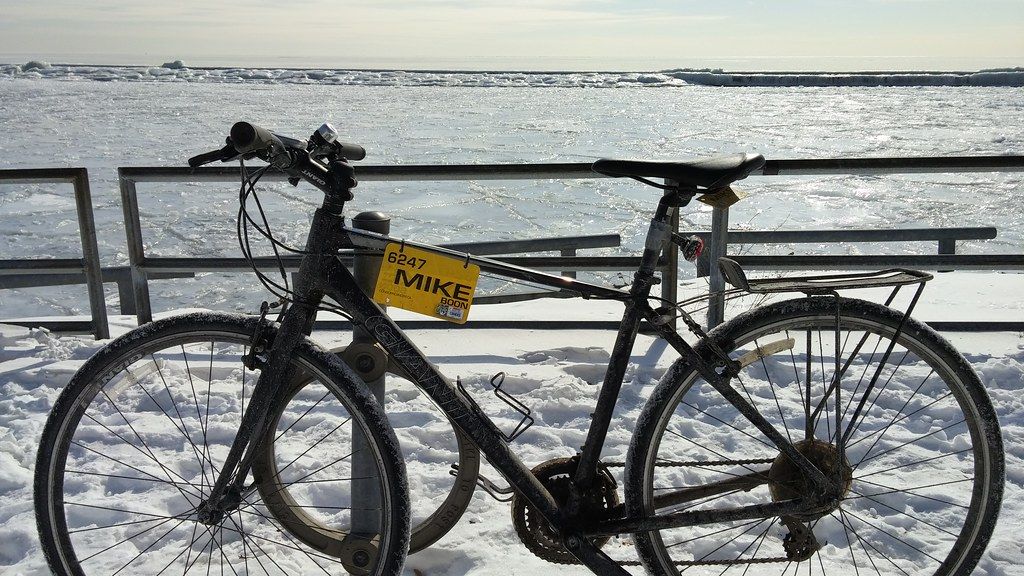Toronto's winters are very bikable, so there's no need to put your bicycle away until spring. I biked through the past two winters and now have it down to a fine art. Sure, you'll need to skip a few days when it's actively storming or when the temperatures plummet below -20°C, but you can get in a good ride most days with only three adjustments.
1. Layer Up
Staying warm is essential if you're going to bike through Toronto's winters. I've learned to add layers as the temperatures drop.
On a -10°C day in January, for example, I'll be wearing:
- two pairs of socks
- long thermal underwear
- water-and-wind-resistant pants
- tee-shirt
- two long-sleeved athletic shirts
- runner's hoodie
- water-and-wind-resistant running jacket
- balaclava
- winter gloves
Trust me when I tell you you'll feel warm in all of the above down to -20° at which point your toes will turn on you.
2. Choose Maintained Routes
Once the snow falls and stays, I have to alter my regular routes. Much of the waterfront trail to the west of me is not maintained in the winter time, and it becomes an unsanctioned skating rink. That's no good.
Through trial, error, and common sense, I've mapped out several routes that are ploughed and salted throughout the winter. The Martin Goodman Trail, for example, is maintained all winter long, and you'll often find me biking it on a cold February afternoon.
Be prepared to lose your regular routes and map yourself rides with cleared snow and ice.
3. Slow Down
Even if your trail / road is ploughed and salted, the greatest danger in winter cycling is losing control on snow and ice. In my adult life I've never fallen off my bike in dry conditions, but I've had several falls in snow and rain. It's essential you reduce your speed during winter rides when snow and/or ice is present. This is especially true when turning.
Get out there and enjoy biking Toronto in winter, just be prepared to bundle up, lose many of your favourite trails, and slow way down. Things will return to normal some time in April.







